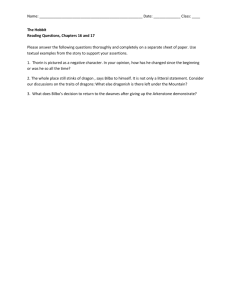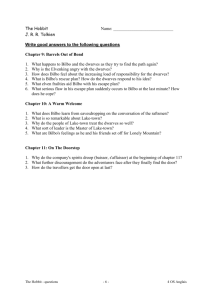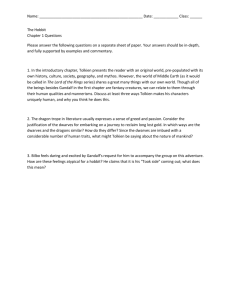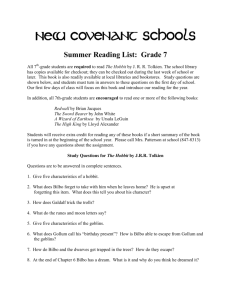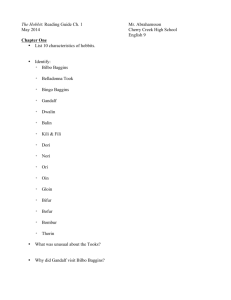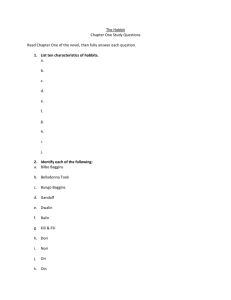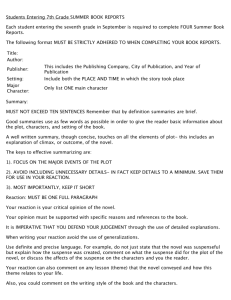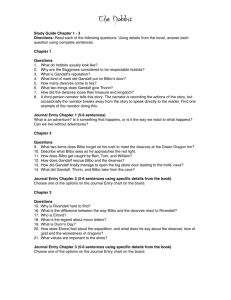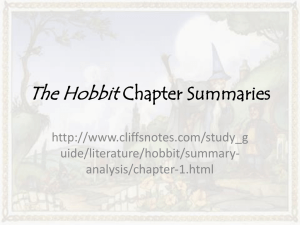Summer Reading List: Grade 7
advertisement
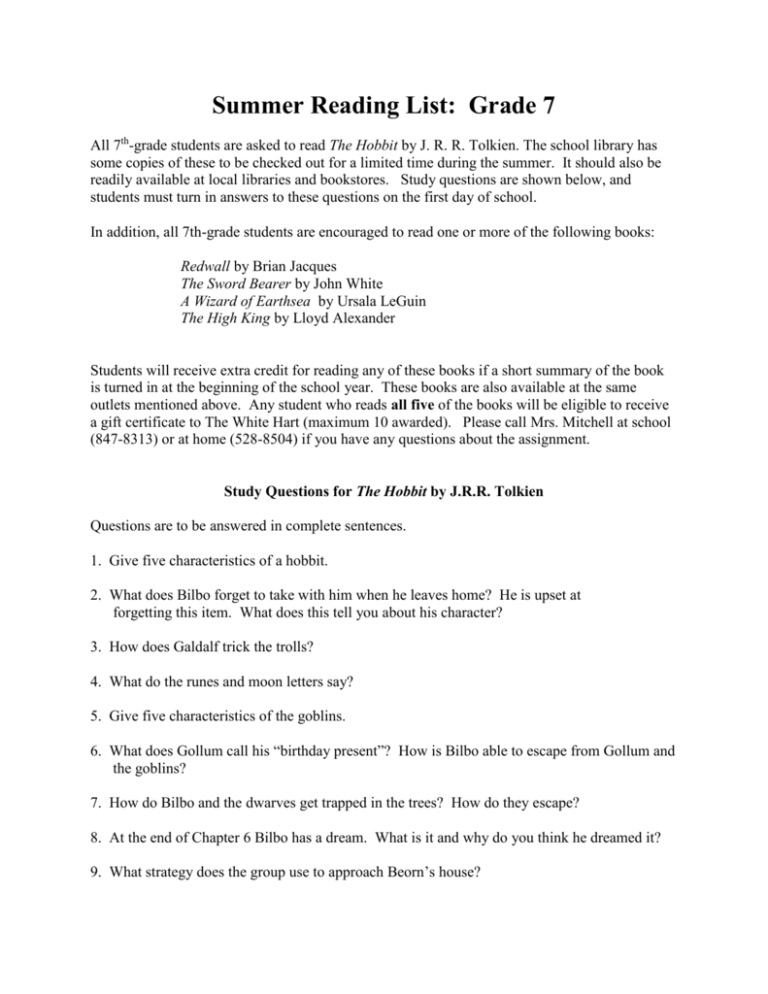
Summer Reading List: Grade 7 All 7th-grade students are asked to read The Hobbit by J. R. R. Tolkien. The school library has some copies of these to be checked out for a limited time during the summer. It should also be readily available at local libraries and bookstores. Study questions are shown below, and students must turn in answers to these questions on the first day of school. In addition, all 7th-grade students are encouraged to read one or more of the following books: Redwall by Brian Jacques The Sword Bearer by John White A Wizard of Earthsea by Ursala LeGuin The High King by Lloyd Alexander Students will receive extra credit for reading any of these books if a short summary of the book is turned in at the beginning of the school year. These books are also available at the same outlets mentioned above. Any student who reads all five of the books will be eligible to receive a gift certificate to The White Hart (maximum 10 awarded). Please call Mrs. Mitchell at school (847-8313) or at home (528-8504) if you have any questions about the assignment. Study Questions for The Hobbit by J.R.R. Tolkien Questions are to be answered in complete sentences. 1. Give five characteristics of a hobbit. 2. What does Bilbo forget to take with him when he leaves home? He is upset at forgetting this item. What does this tell you about his character? 3. How does Galdalf trick the trolls? 4. What do the runes and moon letters say? 5. Give five characteristics of the goblins. 6. What does Gollum call his “birthday present”? How is Bilbo able to escape from Gollum and the goblins? 7. How do Bilbo and the dwarves get trapped in the trees? How do they escape? 8. At the end of Chapter 6 Bilbo has a dream. What is it and why do you think he dreamed it? 9. What strategy does the group use to approach Beorn’s house? 10. Why do the dwarves leave the path through Mirkwood? 11. What does Bilbo name his sword, and why does he give it that name? 12. Why doesn’t Thorin tell the Elvenking about the dwarves’ plans? 13. Alliteration means having two or more different words in the same line of a poem that begin with the same sound (ex: home for the holidays). Find two examples of alliteration in the longer poem in Chapter 9. 14. Why was the Master of Laketown glad to see the dwarves leave? Why was Bilbo the only one unhappy to go? 15. How did the words on the map help to open the door into the mountain? 16. On the second page of Chapter 12 there is a comment by the author about the characteristics of dwarves. How are these characteristics similar to some humans? 17. In what way did Bilbo “fight the real battle” in the tunnel, before he even saw the dragon? 18. When Bilbo introduced himself to Smaug, he used a lot of descriptive riddle-names for himself. List three of these names and explain their meaning. 19. The description of the Arkenstone in Chapter 12 is given in similes, which are comparisons using the words “like” or “as” (ex: “happy as a lark,” or “a pretty girl is like a melody”). List three similes that describe the Arkenstone. 20. A vivid description of the way something looks, smells, feels, tastes, or sounds is called imagery. Imagery is used in Chapter 13 in the description of the coat of mail (chain-like armor), belt, and helm (knight’s helmet) given to Bilbo by the dwarves. Write one phrase for each of the three objects that gives a good picture of what they look like. 21. Why do the Lakemen and the elves decide to go to the Lonely Mountain? 22. Why does Thorin consider the Lakemen his enemies now? 23. Why does Bilbo give the Arkenstone to Bard? 24. What causes the dwarves, the Lakemen, and the elves to forget their quarrel? 25. What would make “a merrier world,” according to Thorin, as he says farewell to Bilbo? 26. In Chapter 19, Gandalf tells Bilbo, “You are not the hobbit that you were.” In what ways has Bilbo changed from the beginning of the book?
